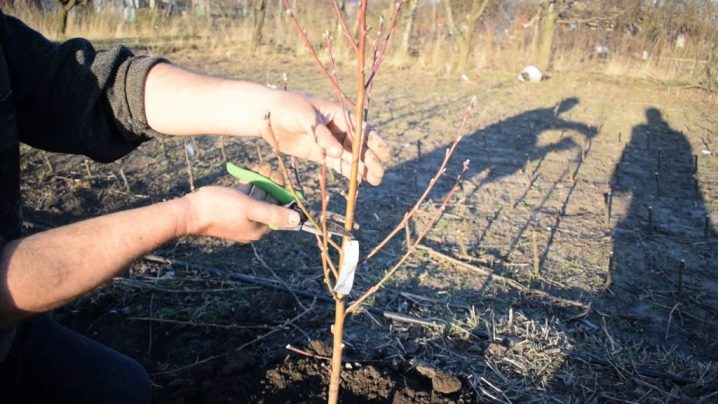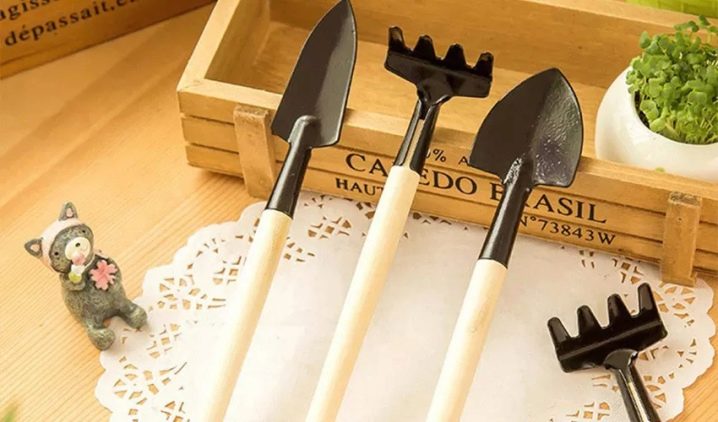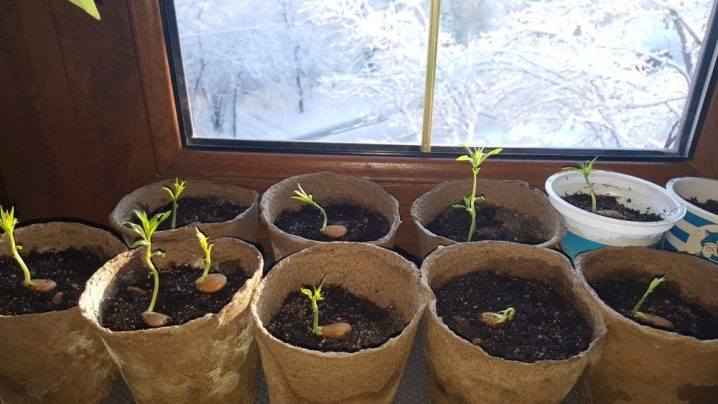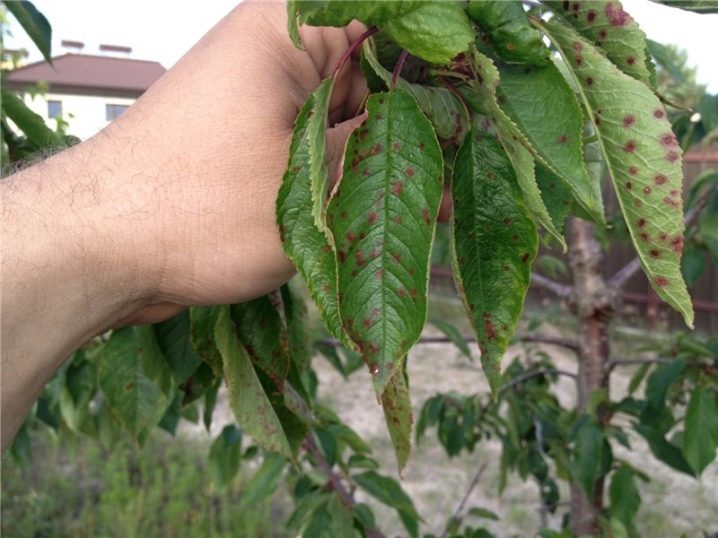Is it possible to grow nectarine from a seed and how to do it?

A fruit-bearing tree can be grown from a nectarine seed. This requires only the bone itself, minor gardening skills, as well as all the necessary materials and devices. It is important to take proper care of the tree so that it does not die in the future.


Growing features
Growing nectarine is not a problem for the southern regions, as these trees bear fruit beautifully in gardens. The actual issue of growing this fruit at home is for central Russia, as well as the northern regions.
The key to the success of the entire operation lies in the correct selection of the bone. Here you need to catch one small, but very important nuance - seeds from fruits that were removed from a tree of their own are suitable for growing. In other words, seeds from fruits from grafted branches are not suitable for growing.
If you pay attention to the statistics given by amateur breeders, then only 25% of all seeds are able to give roots and grow. Based on this, at the same time it is recommended to plant at least 4 seeds.
It is believed that at least one of them will go into further development.

Suitable varieties
The most suitable varieties for growing in the middle lane and in the northern regions are the following: Crimson Gold, Fantasy, Ruby 7, Skif other.
These varieties were chosen because they are easy to maintain and also resistant to low temperatures, able to withstand low light. In order for the whole operation to have a better chance of success, they need to be planted.
But, as a rule, when buying nectarines in supermarkets or at the market, people do not know the name of the variety at all. Here you already need to rely only on luck and try to care for the fruit tree as carefully as possible.

Preparation
Preparatory activities are an important step. Even before the bones themselves are selected, you need to take care of the availability of all materials and devices. This primarily includes soil and capacity.
For care, it is allowed to use any garden accessories: a spray bottle, small shovels, devices for loosening the soil.

Capacity
There are no special requirements for capacity. Here, the best option would be a pot or any plastic container. Initially, it is recommended to plant the seed in a small container. Then, when the tree finally gets stronger and develops, it will be possible to transplant it into a more suitable pot.

Priming
The most suitable for cultivation will be fertile black earth loose soil. You can buy it at the store or prepare it yourself. To do this, in one container, you will need to place 2 parts of soil from a personal plot, one part each of peat, humus and sand. All components should be combined and mixed.
If we talk about temperature, then there is no need to come up with something special. Heating is not needed; standard room temperature will suffice.
Drafts are the only thing to avoid. Since the tree is thermophilic, it can react to a sharp drop in temperature, get sick or, in general, die.

How to plant?
There are three main methods that are recommended to be used if there is a desire to grow a full-fledged fruiting tree from a nectarine seed. The first method is considered classic, since its technology is as close as possible to natural conditions. This growing method uses stratification.
In order to implement this method, the original planting material (bone) must be soaked in cold and humid conditions. Ideal is the lower sections of the refrigerator, where vegetables are usually stored.
For stratification, choose perlite or coarse sand. Sometimes pure peat is used. And as a container, it is permissible to use ordinary flower pots with large drainage holes. The stratification process is simple: the pot must be filled with one of the proposed substances, deepen the bones by 5-7 cm, moisten, and then place the pot itself in a small plastic bag. In order for the air to continue to flow to the bone, several holes must be made in the bag.

The germination process is quite long and can take from 3 to 4 months. Do not forget about him during the entire period.
You need to check the moisture content of perlite or other selected material. After the seeds germinate, they can be safely removed from the refrigerator, since they no longer need such conditions.
Now they need to be transplanted into prepared soil. You should try to avoid sudden temperature changes. For the first few days, the germinated seeds are kept in a cool room, where the air temperature does not rise above 10-12 degrees Celsius. You can place them on the balcony, but do not open windows there, in order to avoid drafts. After 7-10 days, the plant can be brought into the room.
The second method is called simplified or "warm". Here, too, you cannot do without preparatory measures. The bones will also need stratification, but shortened in time. Only 7-10 days will be enough.

Next, you need to get rid of the hard shell of the bone, and place the central part in one of the following solutions:
-
Epin;
-
"Heteroauxin";
-
Kornevin.
3 to 5 hours of exposure in the solution will be sufficient. Then it should be carefully removed and planted in a pot to a depth of 5-8 cm. It is necessary to create a greenhouse effect. To do this, cover the pot with a small piece of plastic bag. Germination ends in 3-4 months. After the seed has germinated, the film can be removed.


The third way, one might say, is for lazy people and those who do not want to wait. It takes much less time than the previous ones. Here you need to initially remove the hard shell, while it is important to try not to damage the core. Then it should be placed in a glass of warm water. In this state, the seed should spend from 3 to 5 days. The water in the glass must be changed every day. But here, too, it is important not to overdo it and not pour too hot liquid into the glass.
After that, the seed must be planted in a pot with fertile soil to a depth of 4-8 cm, covered with a plastic cup and wait until the seed germinates.
Regardless of the chosen method, it is imperative to control the soil moisture level. It is important to avoid both overdrying and excessive moisture.

Care
For a sprouted tree, proper care must be taken. This primarily concerns watering. Moisture should be applied in moderation, as excessive watering will lead to rot. If the sprout looks weak, then it can be additionally watered or, in general, fed.
For oxygen access to the roots, it is sometimes allowed to loosen the soil, but without special diligence, so as not to damage the roots. As the tree grows, you need to transplant it into a larger pot. Do not forget about the mandatory presence of drainage holes.
Diseases and pests
Nectarines are susceptible to certain diseases. Among the most common of them should be highlighted such as leaf curl, cytosporosis, fruit rot, clasterosporium. Much less frequent attacks come from aphids, moths, ticks, weevils. All of them are causative agents of diseases, which, in turn, are divided into two broad categories: infecting the leaves and infecting the trunk.
Leaf diseases include clasterosporium disease. This disease is the most common and most intractable. The affected area is quite extensive: buds, leaves, ovaries and shoots. The symptoms of the disease are most clearly manifested on the leaves of nectarine. The edges of the leaves become dark red, later the affected areas die off and fall off.
If you do not react to such changes in a timely manner, then in a few weeks the disease will turn into a progressive state, a massive defeat will begin.
In the initial stages, it can still be cured if the plant is treated with iron or copper sulfate.

The second most common problem is leaf curl. Initially, they change color and shape, then they begin to fall off. The tree begins to gradually die, respectively, the yield decreases. In order to get rid of the pathogen, it is necessary to carry out treatment. Solutions containing copper are ideal as active agents. These include "Skor", "Hom", "Horus". During the growing season, it is first treated with copper oxychloride, and only then, after 8-10 days, one of the above solutions is used.
Cytosporosis is also a fungal disease that affects not the leaves, but the trunk of the tree. The main symptoms of this disease are brown smudges and droplets on the bark, as well as wilting leaves and twigs. Of course, the tree bears little fruit, since it is in a weakened state.

In this case, the affected branches must be removed. As a prophylactic agent, a 3% solution of Bordeaux liquid for spraying is used.
If we talk about fetal diseases, the most common of them is moniliosis. The fruits gradually begin to rot from the inside, then the lesion spreads to the entire surface. Often such a disease appears due to a too dense crown. Of course, this is a rare phenomenon for indoor trees, but it can still form. In order to avoid this, the tree is treated with "Horus" even before flowering. Then, when the inflorescences appear, they are additionally sprayed with Topaz, and then with Topsin. Thanks to this enhanced effect, the risk of disease is minimized.

If you take proper care of it, then after a few years the tree will begin to bear fruit. Distinctive features of homemade nectarines are:
-
the small size of both the fruit itself and the bone;
-
juiciness;
-
aroma.
Of course, you cannot get a large harvest from such a tree, but you can still collect several pieces of nectarines.












The comment was sent successfully.